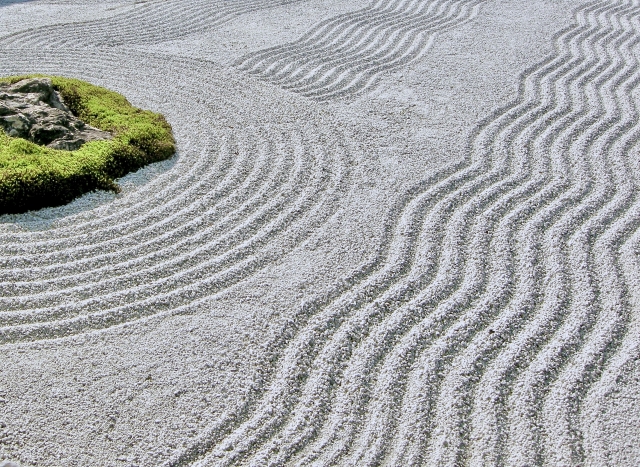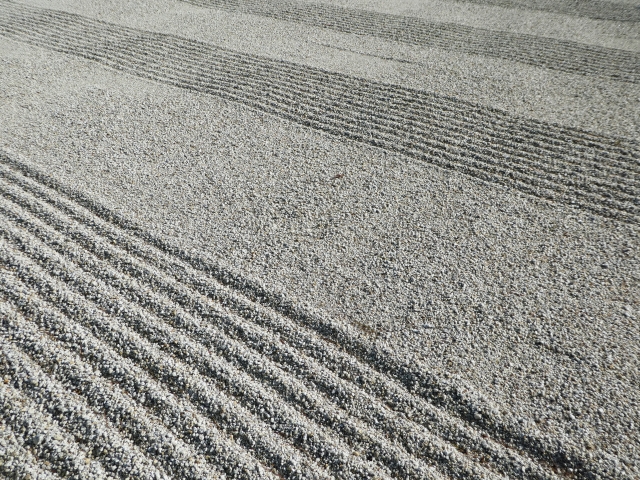Gravel is often used in Japanese gardens, but it is also common to see gravel with broom patterns on it. In Kyoto, it seems to be particularly common. Compared to this, it seems to be less common in Matsue City and Izumo City in Shimane Prefecture, but it is still seen from time to time.
Patterns on gravel look very artistic and beautiful. Patterns that appear on water are called water patterns, and patterns that appear on sand dunes due to wind are called wind patterns or sand crests. Patterns on gravel in the garden are called sand patterns or broom eyes.
What is the meaning behind the broomstones?
The late Mr. Keiji Uehara, the founder of landscape gardening education in Japan, explained this.
Reference: Keiji Uehara, How to Create a Stone Garden, Kajima Shoten, 1996.
It all started with crime prevention
In the postwar era, it was common for ninjas to attack people as assassins. Invariably, they would sneak into a mansion at night, and when they broke into the garden, they would leave footprints in the sand. However, if the garden was simply covered with sand, the footprints could be easily removed. So broom eyes were added so that they could not be easily fixed.
It is a little surprising that the broomstones were first used for crime prevention, but this is one of the many theories that have been passed down through the generations.
Of course, today, I don’t think people use broomsticks as a ninja measure, but gravel is sometimes used as a crime prevention measure because of the sound it makes, so it would not be surprising if it started as a crime prevention measure.

How to keep your garden beautiful
Falls fall in the garden and must be cleaned daily to keep it beautiful. It is important to clean the garden every day, but it is also very difficult. In this day and age, there are many people who would like to rid their yards of the garden.
However, broom work can be fun. It is more like creating a new garden than cleaning it. And when broom eyes are applied, leaves are removed in advance and the garden is kept beautiful.
Broom marks may have been an ingenious way to keep the garden enjoyable.

In some temples, cleaning the garden is the first morning practice. As part of this practice, broomsticks are neatly and carefully prepared every day. In addition to preparing the garden, broomstick-teeth are also connected to the preparation of the spirit and the purification of the mind. In fact, broomstick-ing is a way to become mindless, lose track of time, and feel refreshed.


